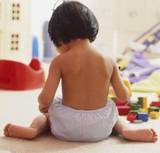Shop
01681
https://www.under5s.co.nz/shop/Hot+Topics+Articles/Child+Development/How+gender+affects+kids+learning+and+play.html
How gender affects kids learning & play
|
We take a look at children’s play choices and what we can do as parents and caregivers to help change gender stereotypes and encourage learning without bias.
|
You might also be interested in ...
Is it time to ditch your toddler's buggy?
Is it time to stop using your toddler's buggy? It might be convenient, but it could be doing more harm than good. Find out more about the long-term physical and social effects it may have as your toddler gets older.
The effects of W-sitting
We take a look at the effects of W-Sitting, why it’s not ideal and the postural and developmental issues it may cause young kids.
join usJoin us on social media for all our latest news. |
sign upSign up and receive our latest newsletters. |
|







How gender effects a child’s learning is influenced by both nature and nurture.
A simple way of looking at the difference between the two is: nature is what is already there at birth – a child’s genetic makeup; nurture is the influence of the environment around us from close relationships with family, the wider community and world around us.
How gender affects kids learning & play
Unknowingly promoting stereotypes
Visit toy shops or large stores and you will see aisles labelled ‘girls toys’ and ‘boys toys’.
The girls’ aisles are filled with cute animal toys, fairy outfits, tea sets and dolls, whereas boys’ aisles are jam packed with big trucks, dinosaurs, tool sets and super hero costumes.
This sends out a message of what is ‘appropriate’ to buy for each gender and what boys and girls ‘should’ like.
Even when babies are born, boys' gifts are likely to feature lots of blue, pictures of trucks and slogans on tee shirts such as ‘here comes trouble’ or ‘little dude’. Whilst girl’s gifts are likely to be fluffy, pink and include slogans such as ‘diva’ or ‘princess’.
Right from birth children are getting messages, both positively and negatively about what it means to be a boy or a girl.
Negative messaging
Even today some children are given negative messages when they explore preconceived gender-based toys.
For example, a boy who goes to play with a doll might be told by an older child or even an adult, 'that’s a girl’s toy'. Boys who put on some fairy wings might be told they look silly and to take them off.
Sometimes nothing negative is said but exploring outside preconceived gender-based toys is not supported.
With girls, the messages may be more subtle. They may not be told they can’t play with something, however they might not be given the opportunity to do so.
A girl can’t learn about putting together a train set if they are never given one, nor can they learn to use a hammer if there is not one in their environment or they are not encouraged to give it a go.
Allow your child to play with a variety of toys and ensure that they do not feel restricted by traditional gender roles from a young age.
Encouraging girls to play with toys traditionally for boys
As an adult, women may not be very good at fixing things or putting things together. Could this have been changed if they had been given construction sets or toy tool sets as a child?
With perhaps no brothers or male role models, they might never have been bought or used these things.
Many of the toys in the ‘boys’ aisle’ help to develop maths skills and problem solving skills as well as spatial awareness. Whilst sports equipment such as rugby balls and cricket bats help to extend important physical skills.
Encouraging boys to play with toys traditionally for girls
Many nurturing qualities and language skills are developed through play areas traditionally thought of as ‘for girls’, such as dolls and family play.
Many boys will grow up and become father’s one day and benefit from the nurturing traits, including empathy, enhanced through playing with dolls.
Children’s play choices & gender
The younger a child is the more likely they are to play with a wider variety of toys.
While there are some preferences influenced by nature, young children have not yet been as influenced as their older peers with gender.
This is why you will see eighteen month old boys dressing up with little high heels or fairy wings, but you are less likely to see a five year old boy do the same.
Very young children will play with what they want to play with without fear of what others will think or say.
As parents and caregivers, we can make the most of this time by having lots of variety available for children in their play.
Where possible, both boys and girls should be given train sets, digger trucks, art and collage sets, dolls, prams, tea sets, carpentry sets, science experiments, messy play, dress ups, instruments and more to enable them to explore new interests and challenges regardless of gender.
5 ways to help encourage learning without bias
Here are 5 ideas to help encourage your little one's learning without gender bias:
1. Go with your child’s interests rather than what you like or what you think they should like.
2. Mix different areas of play such as a tea set with sand play.
3. When choosing kids books look for ones that show both genders in varied and positive roles, such as men and women looking after a baby, being a doctor or teacher, being a superhero etc.
4. Is it your daughter’s birthday coming up? Look at the toys she has. Are there construction sets such as Lego or wooden blocks? Does she have a soccer ball? This doesn’t mean she can’t have a My Little Pony too if that is what she wants, perhaps the blocks could be used to build a stable.
5. Equally if it is your son’s birthday look in his room. Does he have an art set or easel? Does he have a doll? You can provide the learning opportunity but the child will still put their own individual stamp on it. That’s what makes them unique.
More kids articles to enjoy:
Source: This article has been written by Creators, a nationwide service offering quality home-based care and education. Creators are passionate about seeing every child’s unique talent being recognized and nurtured.